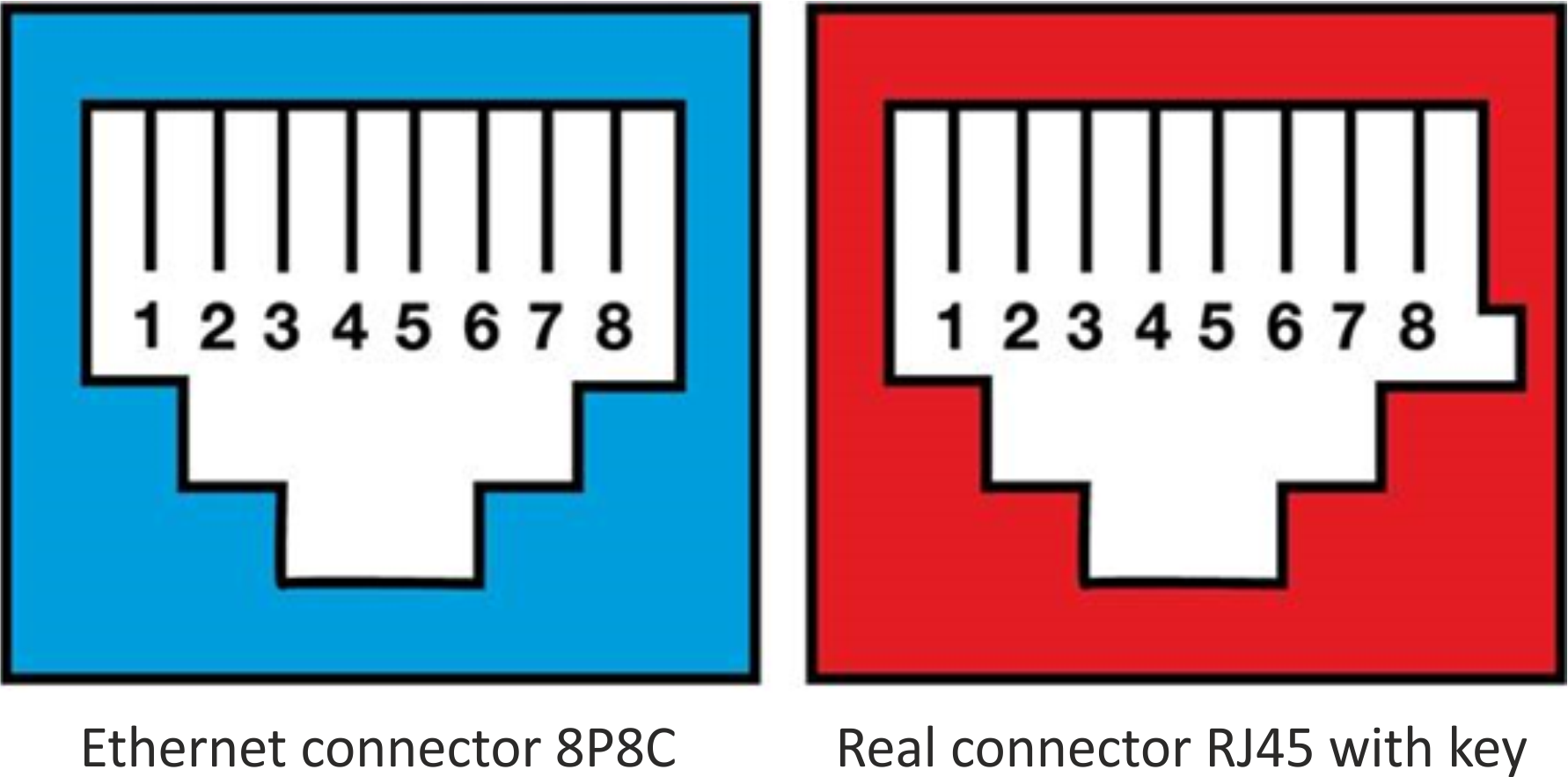Introducing the BKT Elektronik structured cabling system
History of RJ45 jack
RJ45 jack or maybe 8P8C? Certainly, you have encountered both terms with reference to jacks used for ending copper pair cables applied in Ethernet transmission. Can they be used interchangeably?
Beginnings of RJ45
The “RJ” abbreviation named RJ45 means “Registered Jack” and 45 number means type of RJ. The real RJ45 jack originates from the scheme of USOC system (Universal Service Ordering Code) by Bell Systems already developed in the 1970s as a part of the standard telecommunication interface for phone networks. The RJ family jacks were prepared as considerably smaller, cheaper and easier to install substitutes of the jacks used so far in telephone networks.
A new but very similar jack was developed along with occurrence of computer networks, for data transmission: 8P8C.
8P8C
The 8P8C term refers to the system of pins in the jack, hence the name in English “8 Positions 8 Contacts”. In the 8P8C jacks, each plug has eight positions arranged at a distance of approximately 1 mm from each other. Particular cables placed on these positions are linked with the jack pins.
There are a lot of 8P8C jacks, with the reservation that the modern Ethernet 8P8C RJ45 jack is most common.
As a result of a small number of differences between the 8P8C RJ45 jack (modular 8P8C jack) and the real RJ45 jack, the RJ45 term has become an informal name of any eight-pin socket used in computer Ethernet networks.
The majority of the sector calls it the RJ45 jack i.e. something that is actually the modular 8P8C jack.
The differences between the 8P8C jack and RJ45 are shown in the following diagram:

Evolution of standards for RJ45 jack
Since the real RJ45 jack with the key is rarely used and most of us will never encounter it, one can acknowledge that using the RJ45 terminology for the Ethernet twisted jacks is not a huge misuse. As a matter of fact, it is a term which is known to everyone and which everyone likes.
The RJ45 jack (or the modular 8P8C jack, if you have decided to be technically correct) is de facto a standard for the Ethernet twisted pair cabling because it is a commonly recognized interface which ensures full compatibility of systems of category 5/class D, category 6/class E and category 6A/class EA.
Is that the end of the RJ45 jack potential?
Category 8 is a new category of structural cabling, which has been developed by the IEEE for transmission of 25GBASE-T and 40GBASE-T applications.
The category 8 standard was prepared by the ANSI/TIA-568 standardization body and more precisely by the TR42.7 committee. A document which describes the cabling of category 8 is as follows: ANSI/TIA-568-C.2-1 and it was already published in November 2016.
The ANSI/TIA solution of category 8 benefits from 8-position modular 8P8C jack, commonly referred to as the RJ45. It was designed in such a way as to be compatible backwards with the existing 8-position modular 8P8C jacks which are used in the structural cabling from category 5 to category 6A. It was a key requirement of manufacturers of active equipment in order to maintain consistency with billions of the RJ45 jacks used all over the world.
The international (ISO/IEC) and European (CENELEC) standardization bodies determined two variants of cabling for operation of 25 GbE and 40 GbE, they include categories 8.1 and 8.2. Components of category 8.1 are used for construction of class I links and they are compatible aback with an interface of the RJ45 jack for categories 5, 6, 6A according to ISO/IEC 11801 and EN 50173. Components of category 8.2 are used for construction of class II links. Components of category 8.2 are compatible aback with components used for construction of class F and class FA track. Interfaces of the category 8.2 jack ARE NOT COMPATIBLE BACKWARDS with the RJ45 sockets of existing cabling. The international standardization bodies ISO/IEC published a new version of the ISO/IEC 11801 document (edition 3) in 2017, publication of EN 50173 European standard by the CENELEC took place in 2018.

How the RJ45 jack has changed in BKT
The BKT Elektronik cabling system based on the RJ45 jacks is over 12 years old. We tried to benefit from this period as good as possible in order to develop an efficient and safe solution. The BKT RJ45 structural cabling system is a mature solution, recognized in Poland and in whole Europe, however is it ready for contemporary challenges and the latest standards?
Please find below a link to the short movie presenting how the BKT keystone module evolved over the years:

